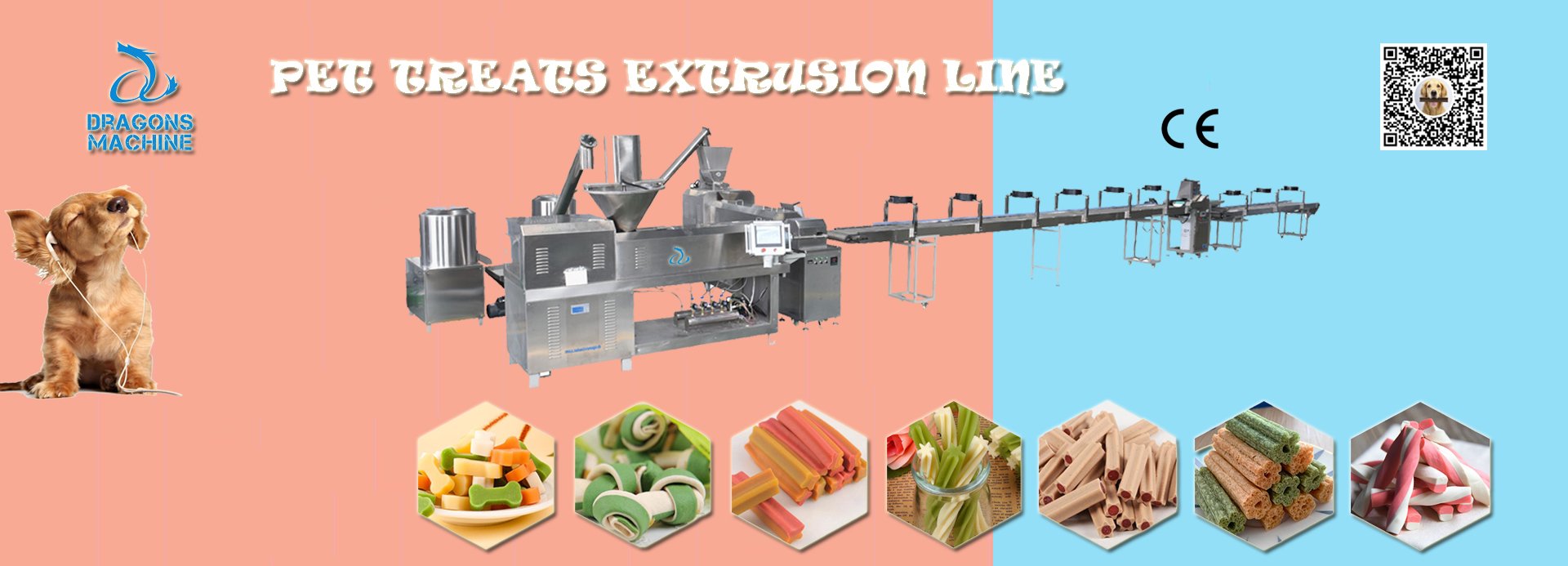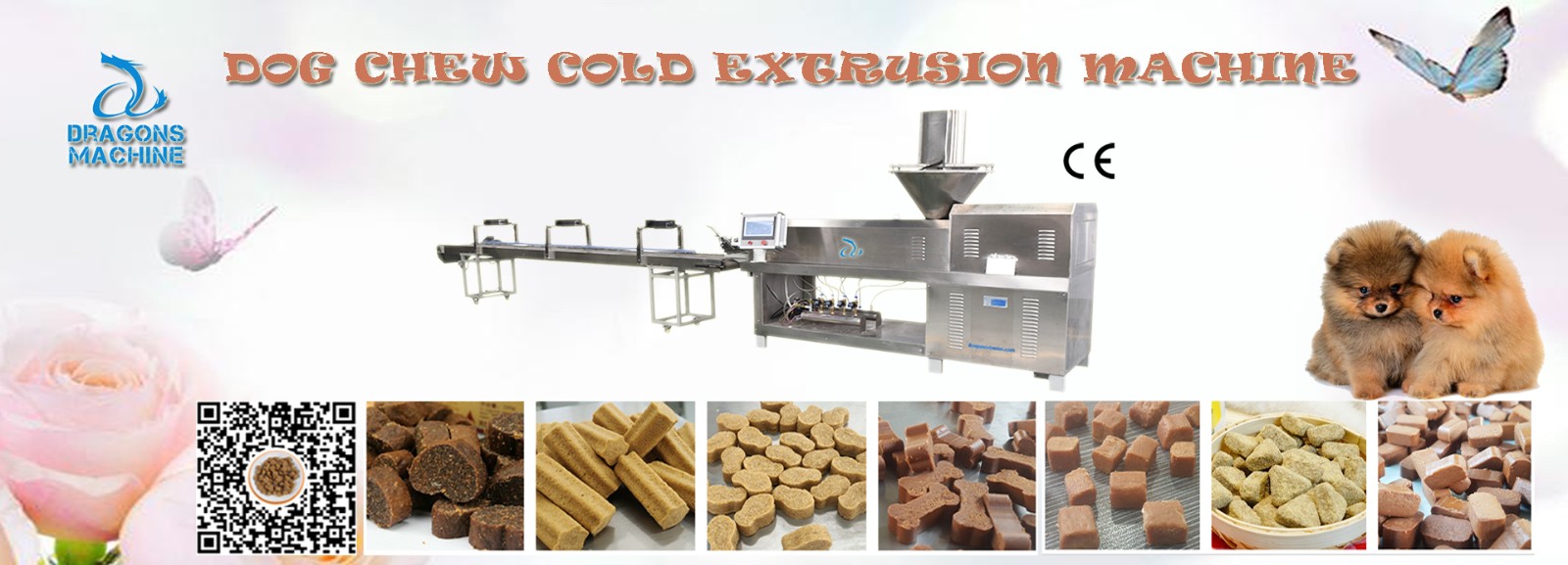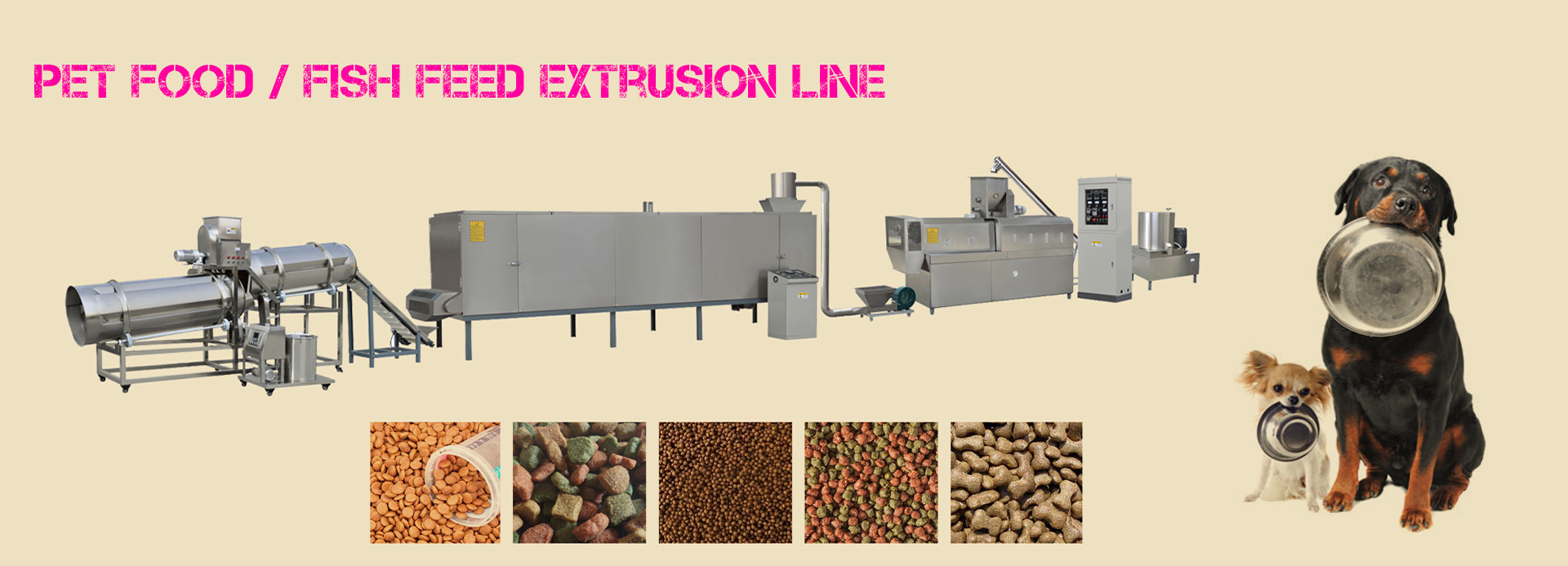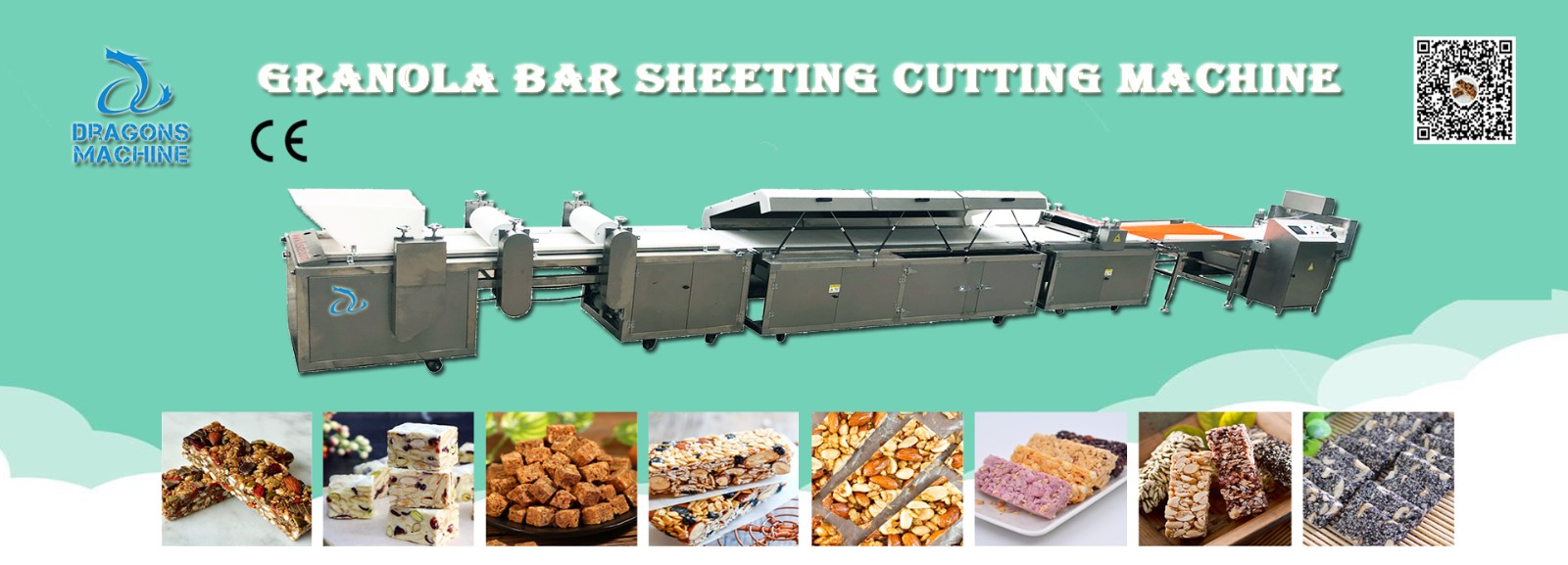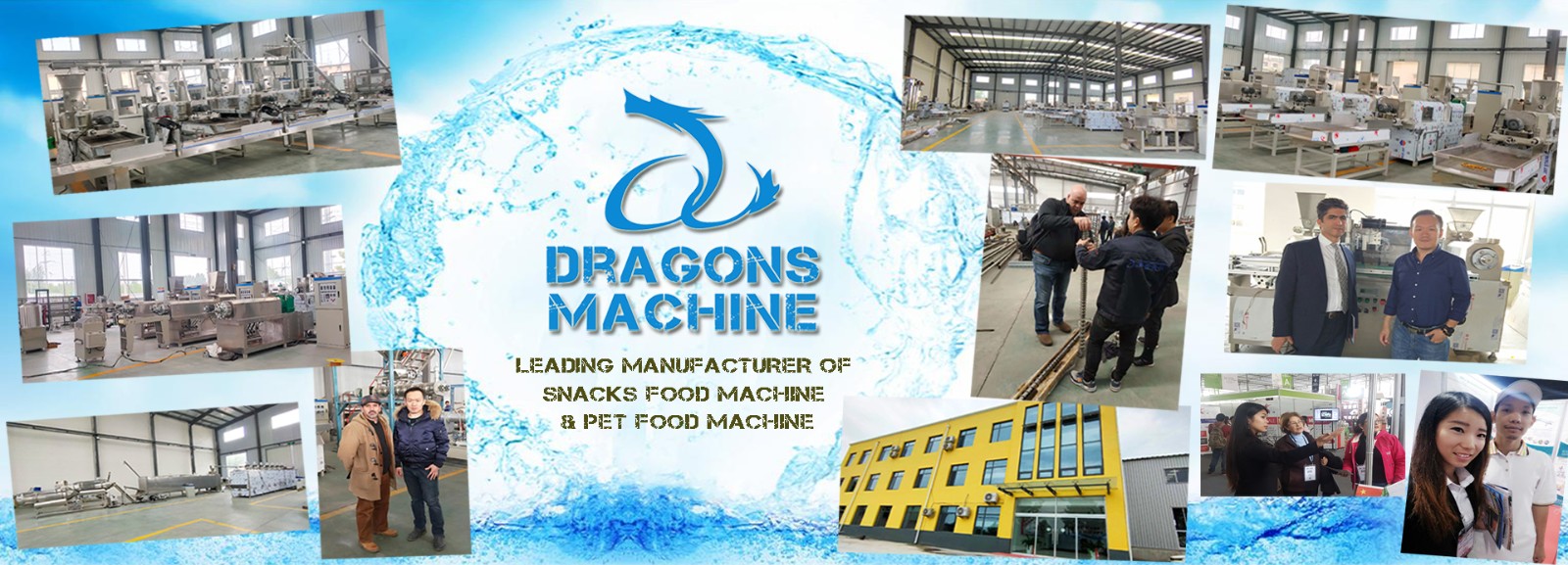As the pet food industry continues to evolve, manufacturers are exploring innovative techniques to enhance the quality and nutritional value of pet food. One such method gaining attention is cold extruding. This unique processing approach involves forming pet food without subjecting it to high temperatures. In this article, we delve into the pros and cons of cold extruding for pet food processing, shedding light on its potential benefits and drawbacks.
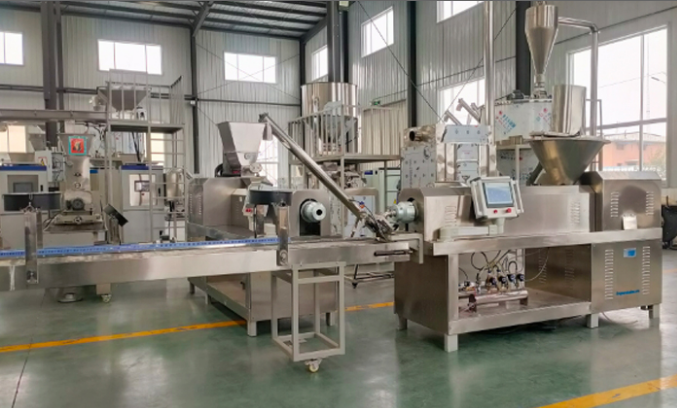
Dog Chew Cold Extruding Machine
Pros of Cold Extruding for Pet Food Processing
Preservation of Nutrients
1. Retained Nutritional Value: One of the primary advantages of cold extruding is the preservation of nutrients. The absence of high heat during the extrusion process helps maintain the original nutritional content of the ingredients. This is particularly beneficial for pet owners seeking to provide their furry companions with a diet rich in essential vitamins and minerals.
2. Suitable for Sensitive Ingredients: Cold extrusion is gentle on ingredients that may be sensitive to heat. Ingredients such as probiotics, enzymes, and certain vitamins can remain viable and effective in the final product, contributing to the overall health and well-being of pets.
Enhanced Palatability
1. Improved Flavor and Aroma: Cold extrusion can result in pet food with enhanced flavor and aroma. The method allows for the retention of natural flavors, appealing to the discerning palates of pets. This can be particularly advantageous for pet owners with picky eaters.
2. Varied Textures: Cold extruding allows for the incorporation of various textures in pet food. Manufacturers can create kibbles with a combination of crunchy and chewy textures, catering to the diverse preferences of different pets.
To summarise, the advantages of cold extrusion are:
- Nutrients are not subject to high levels of mechanical shear and temperature, maximising nutrient supply and minimising costs, as hot extrusion adds nutrients to compensate for damage caused during the process
- Crumbs can be obtained in an easier way as heat damage does not occur
- Final product cost is reduced by lower use of energy and other inputs
- A greater quantity of wet ingredients can be incorporated, allowing for the use of more fresh ingredients
- A lower level of lipid oxidation is obtained, making the final product more nutritious and durable
- There is the possibility of joining two formulas in response to the needs of a particular species or breed
- In carnivorous species feed, it is not necessary to use starchy ingredients, thus reducing feed costs
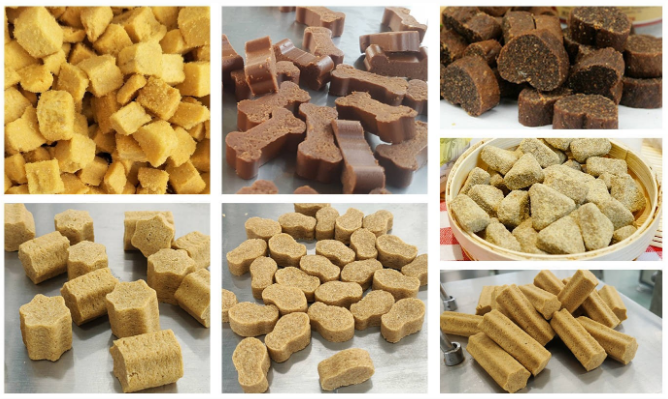
Cons of Cold Extruding for Pet Food Processing
Technical Challenges
1. Limited Expansion: Unlike traditional extrusion methods that involve high temperatures and pressure, cold extrusion may have limitations in achieving the desired expansion of the pet food. This could affect the appearance and texture of the final product, potentially leading to challenges in marketing and consumer acceptance.
2. Specialized Equipment: Implementing cold extrusion requires specialized equipment, which can be more expensive than conventional extrusion machinery. This initial investment may be a deterrent for some pet food manufacturers, especially smaller businesses with budget constraints.
Potential for Microbial Contamination
1. Risk of Pathogens: While cold extrusion reduces the risk of nutrient degradation, it may not be as effective in eliminating harmful bacteria and pathogens as high-temperature extrusion. Manufacturers must implement rigorous quality control measures to ensure the safety of the final product.
2. Shorter Shelf Life: The preservation of pet food without high-temperature processing may result in a shorter shelf life compared to conventionally extruded products. This limitation could impact storage and distribution logistics for pet food manufacturers.
Considerations for Pet Owners and Manufacturers
Pet Owners: Making Informed Choices
1. Nutritional Priorities: Pet owners with a focus on providing the highest nutritional value for their pets may find cold extruded pet food appealing. Understanding the nutritional needs of individual pets can guide the decision-making process.
2. Texture Preferences: Cold extruded pet food offers varied textures, making it suitable for pets with specific texture preferences. Observing your pet's eating habits and preferences can help you choose the right food.
Manufacturers: Balancing Innovation and Practicality
1. Market Demands: Pet food manufacturers need to assess market demands and consumer preferences. While cold extrusion offers unique benefits, understanding the market's acceptance of these products is crucial for successful implementation.
2. Investment Considerations: Manufacturers considering cold extrusion must evaluate the financial implications. Assessing the long-term benefits and potential market advantages against the initial investment is essential for making informed decisions.
Conclusion: Navigating the Cold Extrusion Landscape
Cold extruding for pet food processing introduces a paradigm shift in the industry, offering both advantages and challenges. Pet owners and manufacturers alike must weigh the nutritional benefits and palatability against the potential technical and safety considerations. As the industry continues to evolve, cold extrusion remains an intriguing option for those seeking to provide pets with a nutritionally rich and palatable diet.
Contact Us for Further Assistance
For pet owners seeking more information about cold extruded pet food or assistance in choosing the right diet for their pets, please do not hesitate to contact us. Our knowledgeable team is dedicated to providing guidance on the best nutrition options for your beloved companions.
















